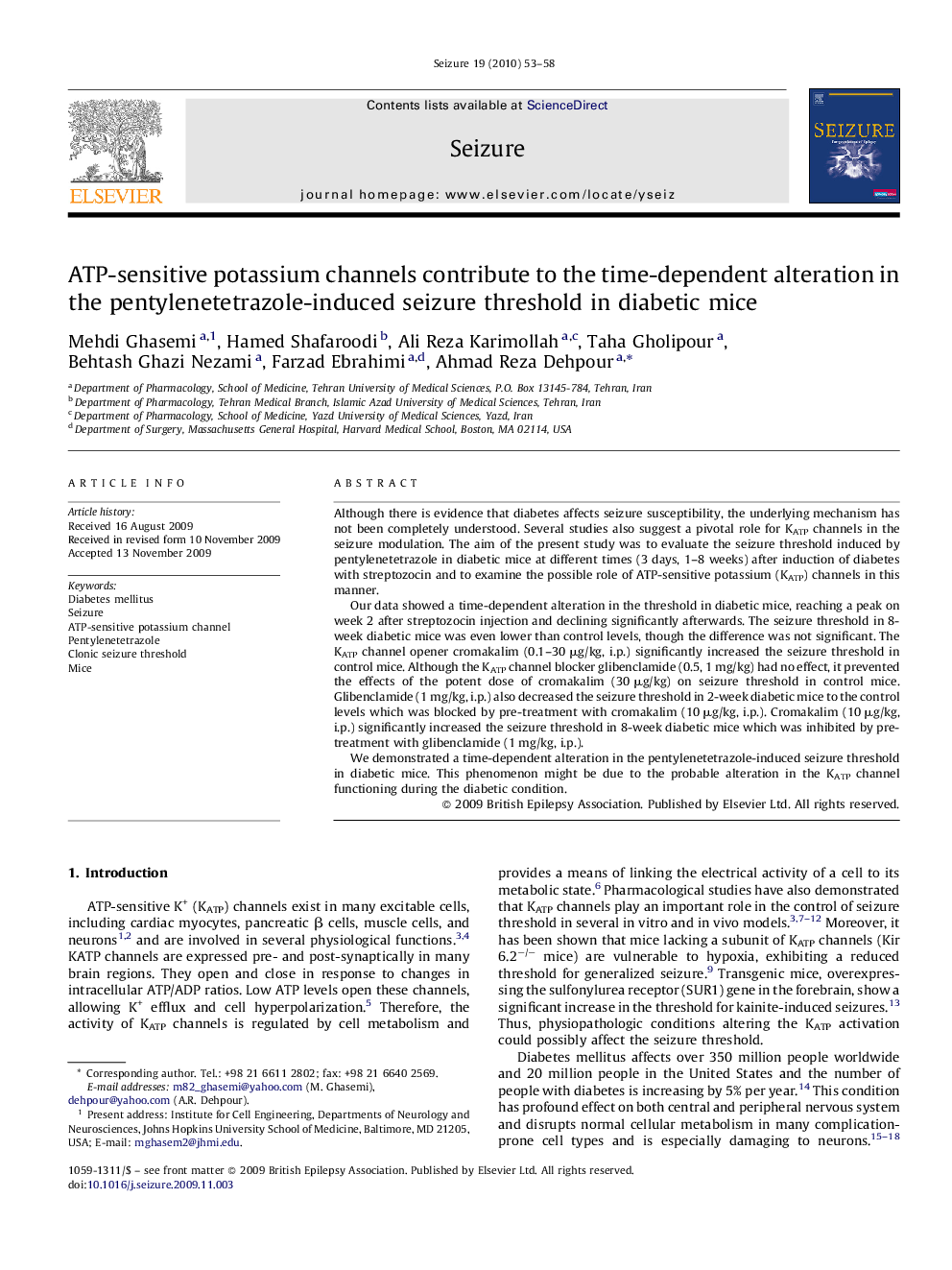| Article ID | Journal | Published Year | Pages | File Type |
|---|---|---|---|---|
| 340709 | Seizure | 2010 | 6 Pages |
Although there is evidence that diabetes affects seizure susceptibility, the underlying mechanism has not been completely understood. Several studies also suggest a pivotal role for KATP channels in the seizure modulation. The aim of the present study was to evaluate the seizure threshold induced by pentylenetetrazole in diabetic mice at different times (3 days, 1–8 weeks) after induction of diabetes with streptozocin and to examine the possible role of ATP-sensitive potassium (KATP) channels in this manner.Our data showed a time-dependent alteration in the threshold in diabetic mice, reaching a peak on week 2 after streptozocin injection and declining significantly afterwards. The seizure threshold in 8-week diabetic mice was even lower than control levels, though the difference was not significant. The KATP channel opener cromakalim (0.1–30 μg/kg, i.p.) significantly increased the seizure threshold in control mice. Although the KATP channel blocker glibenclamide (0.5, 1 mg/kg) had no effect, it prevented the effects of the potent dose of cromakalim (30 μg/kg) on seizure threshold in control mice. Glibenclamide (1 mg/kg, i.p.) also decreased the seizure threshold in 2-week diabetic mice to the control levels which was blocked by pre-treatment with cromakalim (10 μg/kg, i.p.). Cromakalim (10 μg/kg, i.p.) significantly increased the seizure threshold in 8-week diabetic mice which was inhibited by pre-treatment with glibenclamide (1 mg/kg, i.p.).We demonstrated a time-dependent alteration in the pentylenetetrazole-induced seizure threshold in diabetic mice. This phenomenon might be due to the probable alteration in the KATP channel functioning during the diabetic condition.
